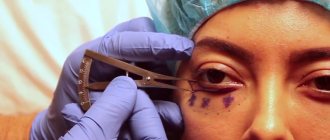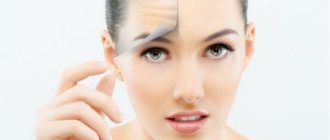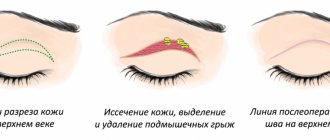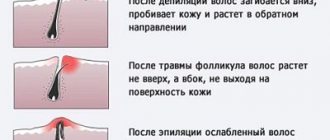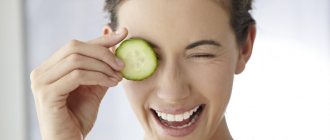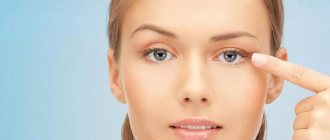Prices for treatment (removal) of scars and scars
Dear patients! The specialist will inform you about the exact cost and scope of necessary procedures after consultation.
Dermatology
- Primary appointment with a dermatologist (trichologist) (without dermatoscopy)
1200 rub.
- Repeated appointment with a dermatologist (trichologist) (without dermatoscopy) (no more than 2 months from the previous appointment)
900 rub.
- Dermatoscopy
450 rub.
- Examination of the scalp under magnification (trichology)
800 rub
- Wood's lamp examination
250 rub.
- Histological examination of the material
2300 rub.
Removal of skin tumors
- Removal (radio wave destruction) of milia, papillomas, small benign neoplasms, pinpoint angiomas, acne elements, molluscum contagiosum:
- 1 element
400 rub
- From 20 elements
300 rub
- From 50 elements
200 rub
- Removal of a neoplasm on the eyelid – 1 element
800 rub
- Removal of telangiectasia – 1 sq.cm (radio wave destruction)
500 rub
- Removal of benign neoplasms (keratoma, fibroma, etc.) - 1 element (radio wave destruction or cryodestruction). Anesthesia included in the price
:
- D
1100 rub.
- D = 0.5 - 1 cm
1500 rub.
- D > 1 cm
1900 rub.
- Removal of palmar warts – 1 element). Anesthesia is included in the price.
1000 rub
- Removal of plantar warts – 1 element (up to 0.5 cm). Anesthesia is included in the price.
1200 rub.
- Removal of plantar warts – 1 element (more than 0.5 cm). Anesthesia is included in the price.
1500 rub.
- Radiosurgical removal of benign melanocytic and non-melanocytic formations (moles, wen, etc.) - 1 element. Anesthesia included in the price:
- D
1500 rub.
- D = 0.5 - 1 cm
2000 rub
- D > 1 cm
2500 rub.
- Treatment of an area of the scalp for radiosurgical removal of the tumor
400 rub
- * For simultaneous removal of 5-9 formations - 5% discount; For simultaneous removal of more than 10 formations - 10% discount
Anesthesia for extractions
- Application anesthesia (cream, spray)
200 rub
- Injection anesthesia (1 ampoule)
400 rub
Scar tissue treatment
- Treatment of scar tissue (cryodestruction) – area up to 1.5 cm
1500 rub.
- Intramuscular injection of the drug (without the cost of the drug)
500 rub
- Intralesional injection of the drug in the scalp area (without the cost of the drug)
1500 rub.
- Intralesional injection of the drug (without the cost of the drug)
800 rub
- Diprospan
500 rub
- Longidaza
900 rub.
Laboratory research
- Collection of biological material
300 rub
- Cytological examination of scrapings and impressions from the surface of the skin and mucous membranes
900 rub.
- Microscopy and culture for parasitic fungi (nails)
1600 rub.
- Microscopy and culture for parasitic fungi (skin)
1600 rub.
- Parasitic fungi, microscopic examination of skin samples
900 rub.
- Parasitic fungi, microscopic examination of nail samples
900 rub.
- Demodex test, microscopy (skin, abscess discharge)
800 rub
- Demodex test (eyelashes)
800 rub
- Sowing of wound discharge and tissues for flora and sensitivity to antimicrobial drugs
1250 rub.
- Culture of microflora, determination of sensitivity to antimicrobial drugs and bacteriophages
1300 rub.
- Sowing of wound discharge and tissues for flora and sensitivity to antimicrobial drugs according to the extended spectrum
2100 rub.
Plasmalifting and microfatgrafting.
Plasmalifting is the treatment of scars with a drug obtained from a person’s own blood. Plasmalifting is used to correct small pinpoint irregularities up to 1 mm deep, for example post-acne. Plasmalifting is a cosmetic injection procedure performed at intervals of 3-4 weeks. Typically 3-7 procedures are performed to achieve the desired results.
Microfatgrafting.
Microfat grafting is the transplantation of micrografts (up to 1-2 mm) of one’s own adipose tissue into the scar area. Microfatgrafting is indicated in the following cases:
- small pinpoint scars 1-2 mm deep (post-acne)
- superficial hypotrophic scars
- thin hypotrophic scars.
- striae
- residual retractions after scar lipofilling.
- Wrinkles
Microfat grafting is performed by a plastic surgeon. The collection and planting of micrografts is carried out using a syringe without skin incisions.
Description
Scars can occur in response to any aggressive impact on the skin. The most common causes of scars are:
- surgical operations;
- injuries;
- burns;
- skin diseases.
Discounts on Botox Xeomin Botulax until September 30, 2020
20% discount - offer limited to availability of the drug
Scars can be of two types:
- atrophic;
- hypertrophic.
Atrophic scars occur as a result of an incomplete process of tissue formation to replace destroyed skin cells.
Hypertrophic is the result of excessive formation of new tissue in place of dead cells. They are visually more noticeable, protruding above the surface of the skin.
Keloid scar
Scars appear at the site of healing of the skin, as well as other tissues. In total, there are four types of scars: atrophic (healing occurred with reduced collagen production), normotrophic (scar healed with normal levels of collagen production), hypertrophic (active neocollagenesis during healing of skin damage), keloid (formed as a result of excess production of connective tissue during healing ).
A keloid scar rises above healthy skin and often has a bluish, pink or red tint. It is also distinguished by a smooth shiny surface. But its main difference is that it can grow beyond the boundaries of the original wound, which other types of scars never allow. Because of this fact, many consider a keloid to be a tumor or even a type of cancer. But that's not true.
Causes of keloid scar appearance
Scientists have been studying keloid for more than two centuries, but still do not understand why it appears. However, experts have identified factors that can affect the formation of these types of scars on the skin. Main known factors:
- The development of inflammatory processes in the wound, as well as impaired blood circulation.
- Damage to the developing scar.
- Genetic predisposition.
- Acne disease.
- Dark skin.
- Endocrine diseases.
- Immune system failures.
- Displacement of wound edges during wound healing.
- Wound infection.
- Location (keloids are most often found on the ears, upper back, chest).
- Pregnancy.
- Transitional age.
- Taking corticoids.
There are even cases of keloids occurring on intact skin. But they are very rare.
Cryotherapy
Cryotherapy is one of the effective methods for treating scars. It can be used alone or in combination with other types of treatment.
Treatment of scars with nitrogen is a cosmetic procedure related to the method of local cryotherapy, in which skin imperfections are removed using cold exposure.
Cryotherapy has proven itself in the field of dermatology and cosmetology and is widely used in medical institutions. Treatment using cryotherapy is quite comfortable and does not cause pain.
When using cryotherapy to remove scars, the doctor selects a treatment regimen individual for each patient. This may include injections of anti-inflammatory drugs, physical therapy methods, and more.
In addition, the final result depends on the individual characteristics of scar formations: hypertrophic and fresh scars are much more amenable to cosmetic correction than keloid and old ones.
Composition and action
The active component of the drug is Betamethasone, a synthetic glucocosteroid component. Diprospan contains 6.43 milligrams of Betamethasone Dipropionate and 2.63 milligrams of Betamethasone sodium phosphate. Auxiliary components of the medication are purified water, sodium salt, polysorbate 80, polyethylene glycol, sodium chloride, Trilon B, nipazole, carboxymethylcellulose.
For keloids
The formation of keloid scars is associated with the proliferation of soft tissues. This phenomenon occurs due to the reaction of the immune system to the damage that has occurred. The medicine, due to its immunosuppressive properties, blocks this reaction. This stops the keloid from growing. Diprospan, used for keloid scars, stimulates its rapid resorption. The neoplasm becomes noticeably pale. Instead of a rich lilac (red) color, a pink flesh tone appears. The size of the scar also decreases.
To hypertrophic
The principle of formation of hypertrophy and keloids is similar, and occurs as a result of the proliferation of collagen fibers. The effect of Diprospan on the scar is similar. Elimination of hypertrophic scar occurs much faster.
For atrophic
The use of a drug of this pharmacological group is not advisable in the presence of atrophic scars. Treatment with Diprospan for keloid and hypertrophic scarring sometimes leads to atrophy of the skin. Atrophic scars do not have specific symptoms. Therefore, it is better to treat such scars using hardware therapy methods.
Physiological mechanism of the effect of liquid nitrogen on scars
Liquid nitrogen is a colorless, odorless chemical liquid with a boiling point of -196. Nitrogen is widely used in cosmetology and dermatology to remove scars, scars, various benign skin growths, as well as for massage, acne treatment, and hair loss. Liquid nitrogen has high healing activity and is easy to use. Depending on the cryotherapy technique, liquid nitrogen has different effects on the skin.
The mechanism of action is based on the fact that local exposure to liquid nitrogen causes a chemical burn of a cold nature, after which unnecessary cells are rejected. Necrosis and cell rejection, which occurs due to lack of oxygen, lead to flattening of the lesion. Freezing acts locally and causes the death of cells that form scars, scars and other imperfections that disrupt the skin texture.
The undeniable benefits of removing scars with liquid nitrogen
- There is no need to use local anesthetics.
- The risk of wound infection after removal of scars is minimized, since local exposure to extremely low temperatures kills all microflora and does not damage the basal layer of the epidermis.
- No bleeding after the scar removal procedure.
- If necessary, nitrogen can be used to remove scars several times on the same area of skin.
- Affordable price for the procedure.
Features and benefits of the drug
Diprospan is a drug with antihistamine, antishock, immunosuppressive and anti-inflammatory properties. It has an inhibitory effect on the production of eosinophils, gamma interferon, interleukins and macrophages. The drug stops metabolic processes.
Diprospan is a hormonal corticosteroid. Thanks to this, the expected effect of the drug occurs almost instantly. The medication is available in the form of an injection solution. The substance is contained in a glass ampoule with a nominal volume of 1 milliliter.
Diprospan is used as an emergency aid for many diseases and disorders:
- rheumatic diseases of internal organs;
- rheumatoid arthritis;
- osteoarthritis of the knee joint due to mechanical damage;
- osteochondrosis;
- acute gout;
- anaphylactic shock;
- gonarthrosis of the knee;
- shock due to injuries;
- bronchial asthma;
- dermatitis, psoriasis;
- collagen diseases;
- colitis as a result of stomach ulcers;
- acute adrenal insufficiency;
- acute hepatitis;
- hepatic coma;
- cerebral edema;
- oncological diseases (including acute leukemia);
- scarring of soft tissues.
The drug suppresses the activity of the immune system, allowing you to stop pathological processes. In cases of fighting scars, Diprospan prevents the proliferation of soft tissues, stops metabolic processes in formations, eliminates inflammation and associated symptoms. The first visible changes are observed within 2 weeks. The size of the scar decreases noticeably, the stabbing pain goes away, itching and burning disappear, and dark scars turn pale.
It is unacceptable to use a dosage of the drug exceeding 2 milliliters per injection session.
How the procedure for removing scars with nitrogen is carried out in the clinic
To remove scars, the method of deep freezing is used before the onset of a vesicular reaction. Liquid nitrogen is a concentrated source of cold that removes unwanted skin growths and protrusions. To prevent the development of infection, before starting the procedure, the scar and the area around it are treated with an antiseptic solution.
Nitrogen is applied to the scar using a special applicator, which is a wooden stick about 35 centimeters long, or a cotton swab. The process of freezing a keloid scar usually lasts from a few seconds to 2-3 minutes. The number of sessions is determined by the doctor.
Removal of scars with nitrogen in Krasnogorsk
Scars on the skin are an unpleasant cosmetic defect that causes discomfort, decreased self-esteem and complexes. Modern cosmetology can quickly and effectively solve this problem, restoring beauty and health to your skin. Medical in Krasnogorsk offers to use an effective technique: quick and painless removal of scars with nitrogen at an affordable price.
Contraindications
The instructions indicate that the use of the drug is unacceptable under certain circumstances:
- individual intolerance to components;
- stomach ulcer;
- duodenal ulcer;
- diabetes;
- infectious diseases (viral, fungal, bacterial);
- Itsenko Cushing's disease;
- psychoses;
- glaucoma;
- thrombophlebitis;
- diverticulitis;
- pregnancy, breastfeeding;
- some period after vaccination;
- open form of tuberculosis.
To prevent complications, you should pay attention to the ailments present, and also undergo an examination by a doctor.
Diprospan is an effective remedy that can quickly improve the condition of an adult. However, the drug has many contraindications and side effects. Therefore, it is not permissible to use Diprospan for scars on your own without the participation of your doctor.
At the Health Factory MC, the most modern methods existing in the world are used to correct scars:
